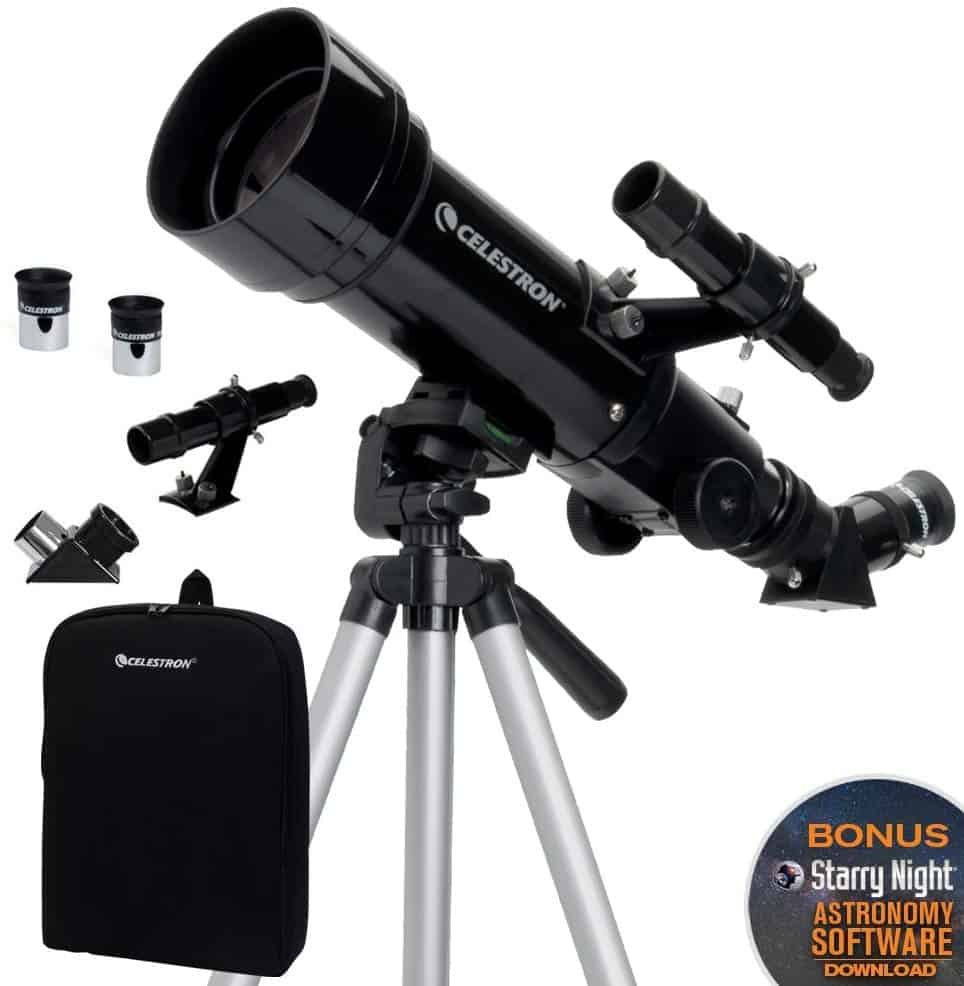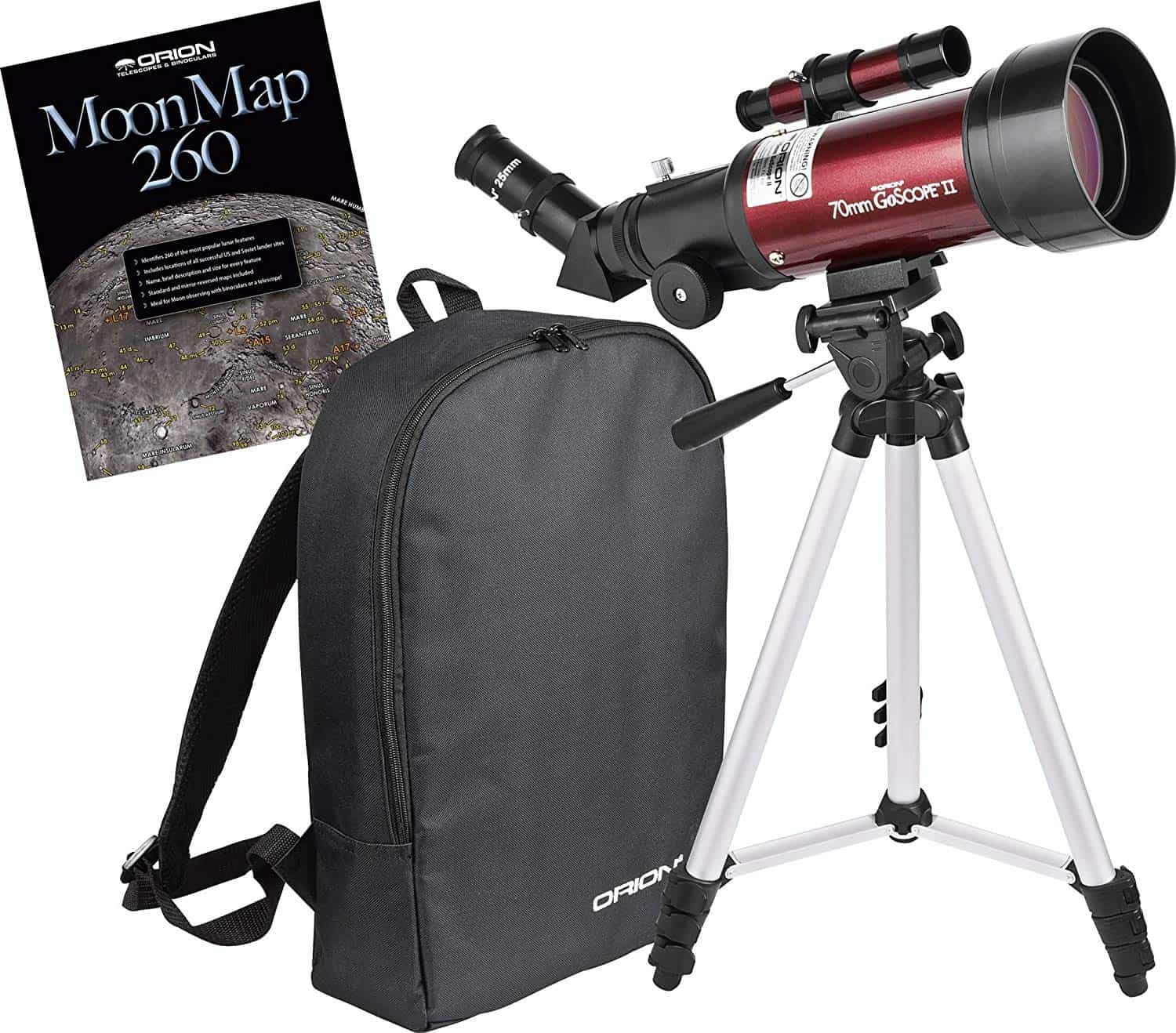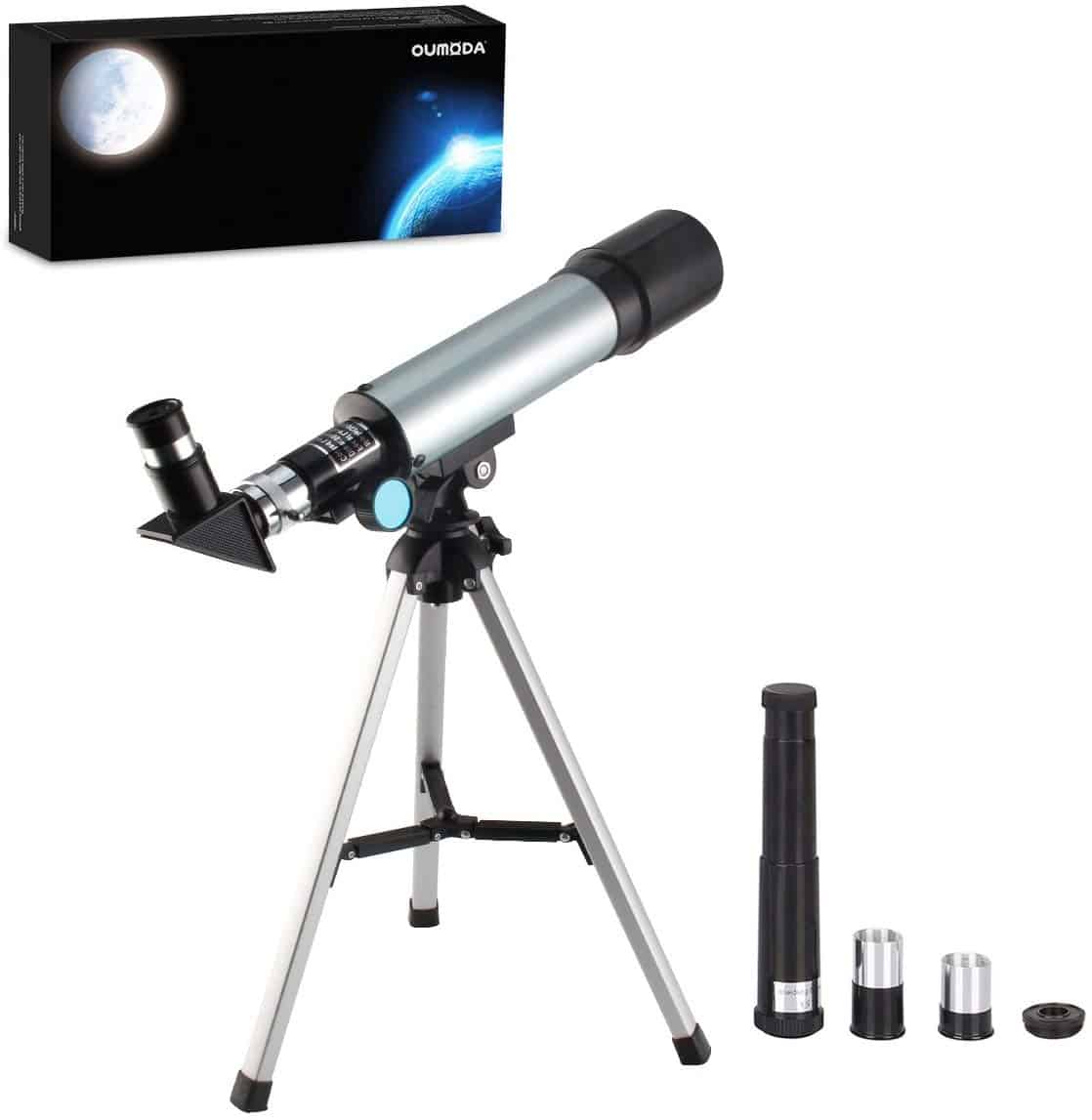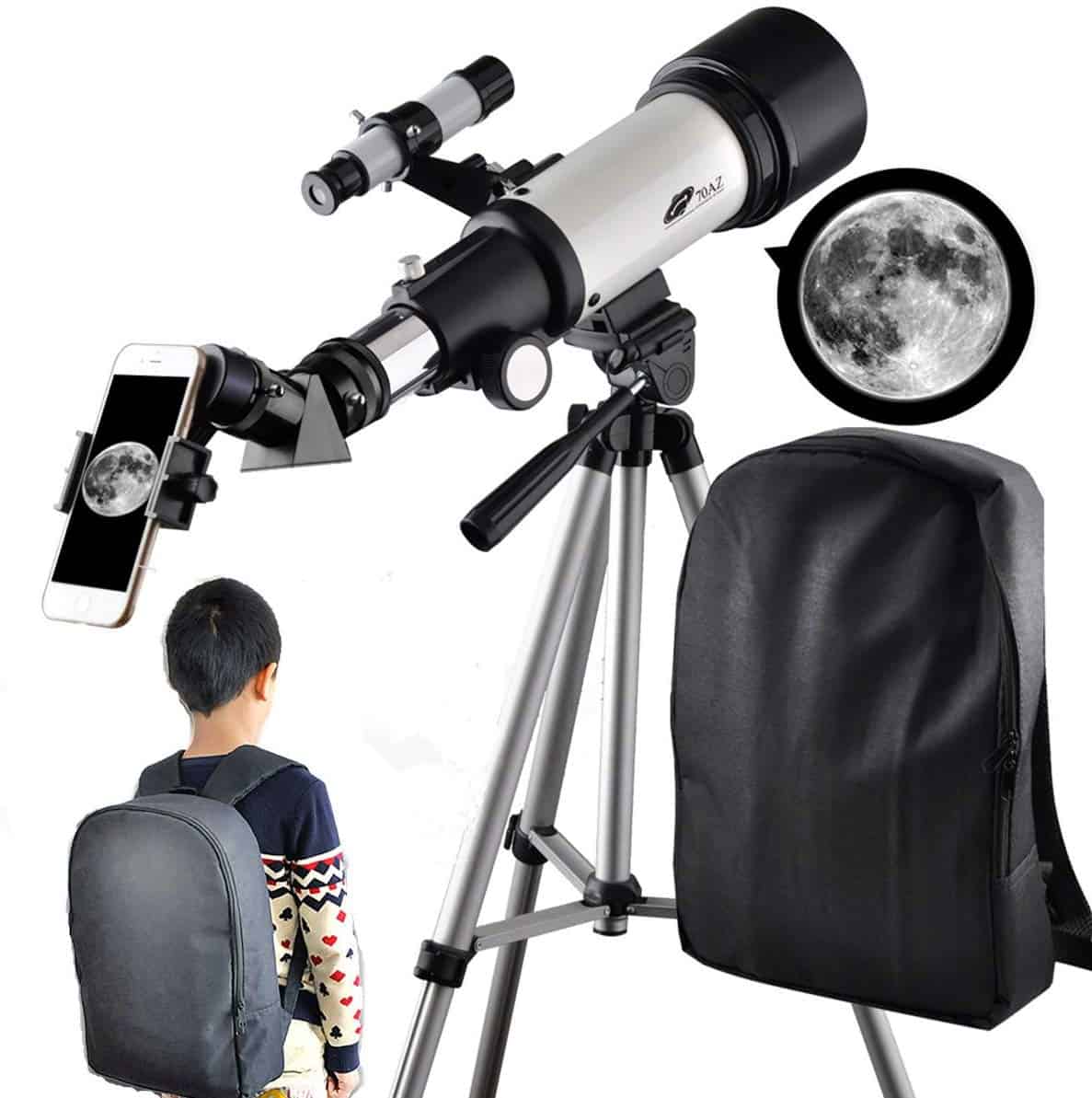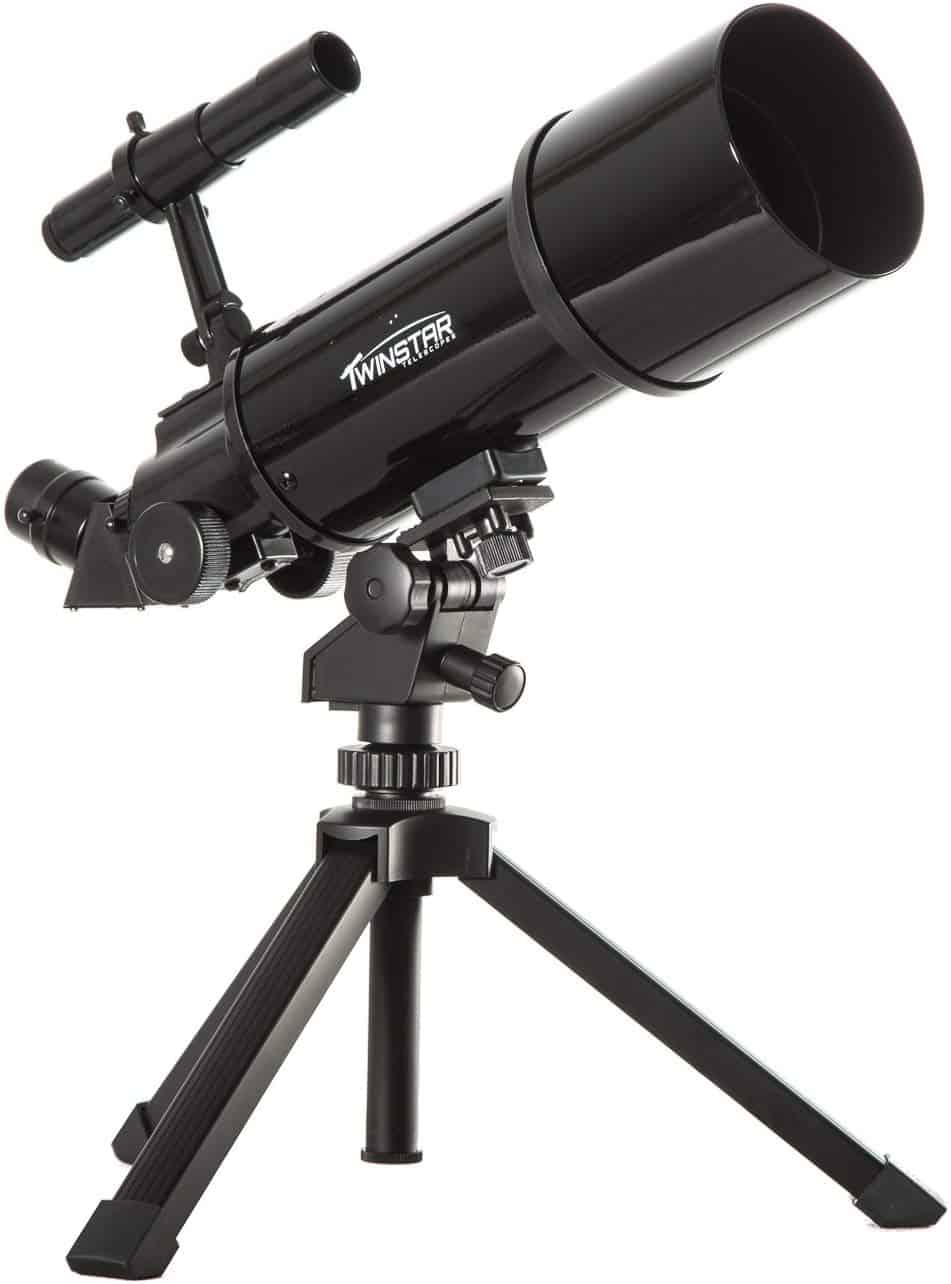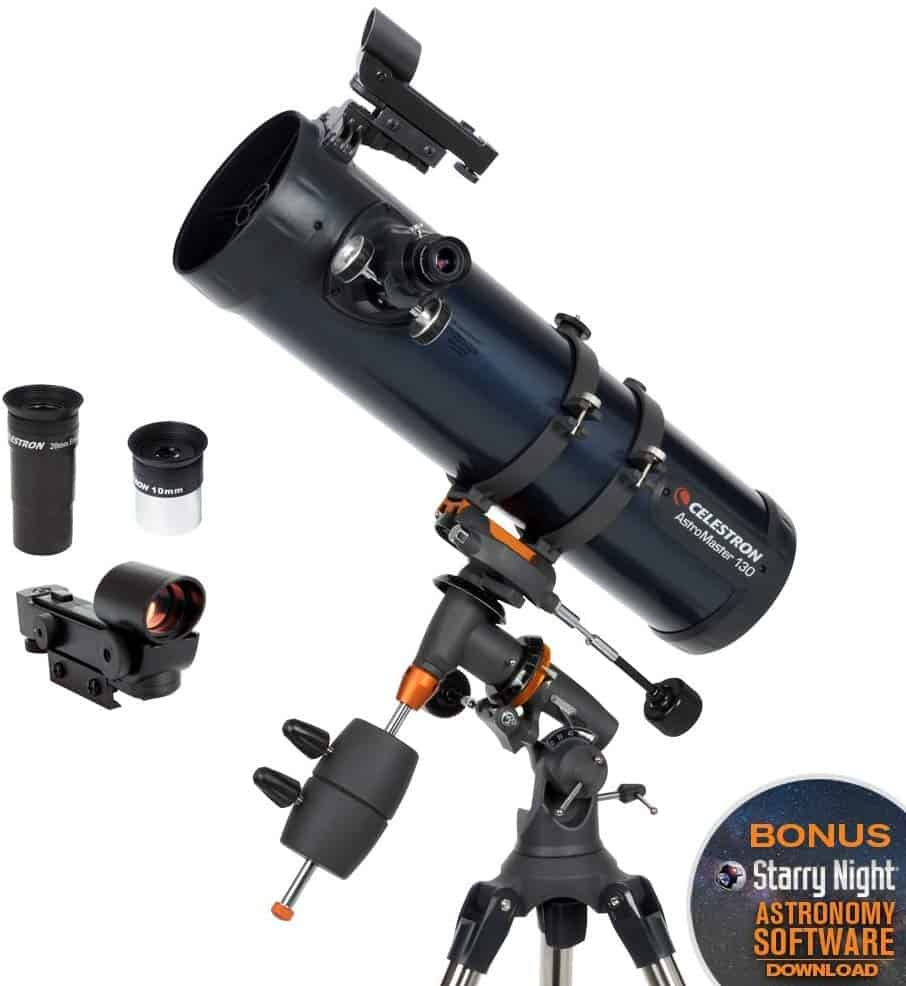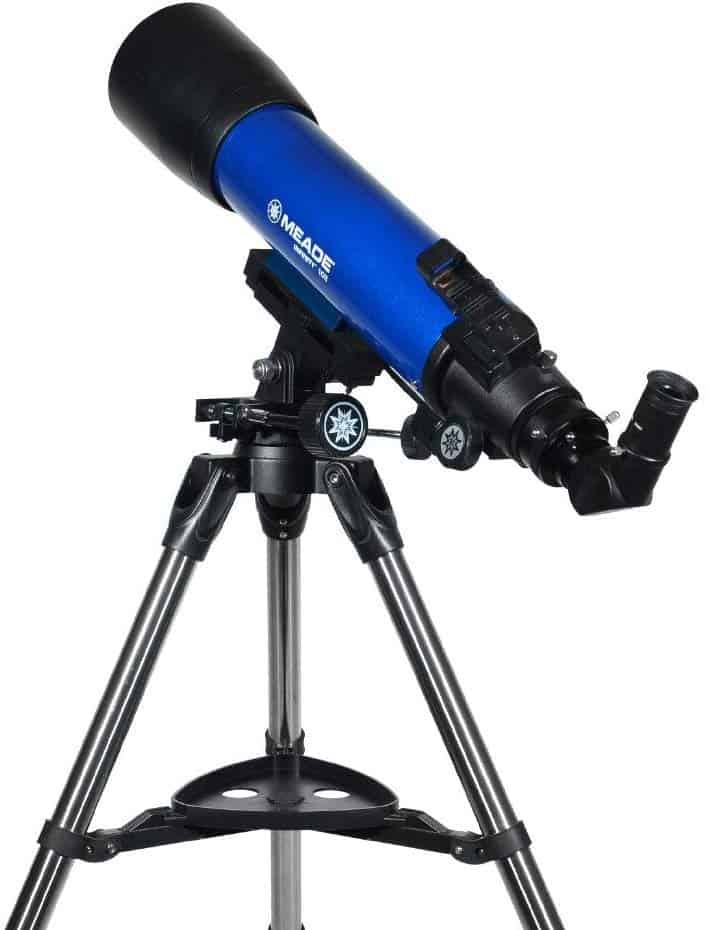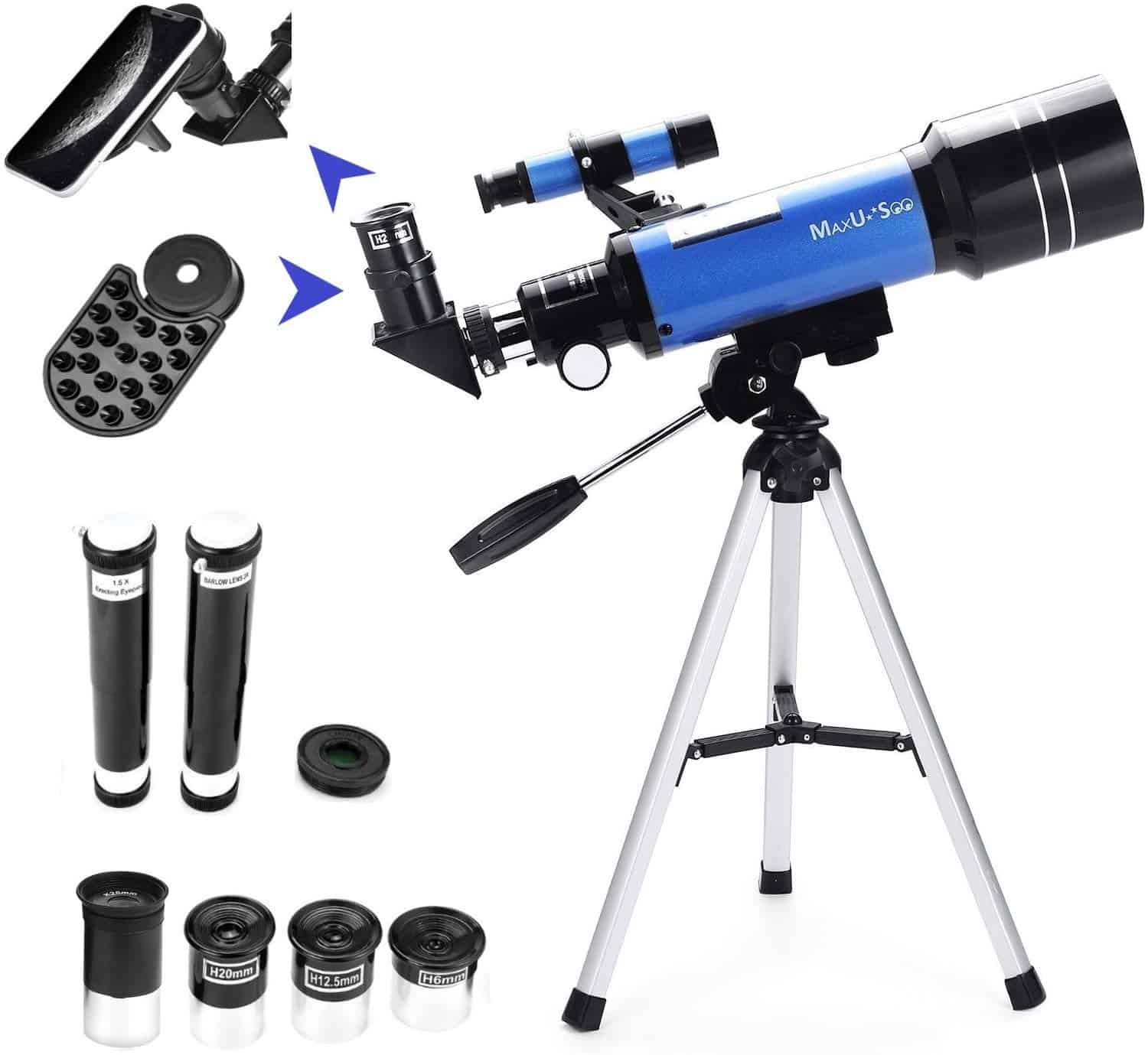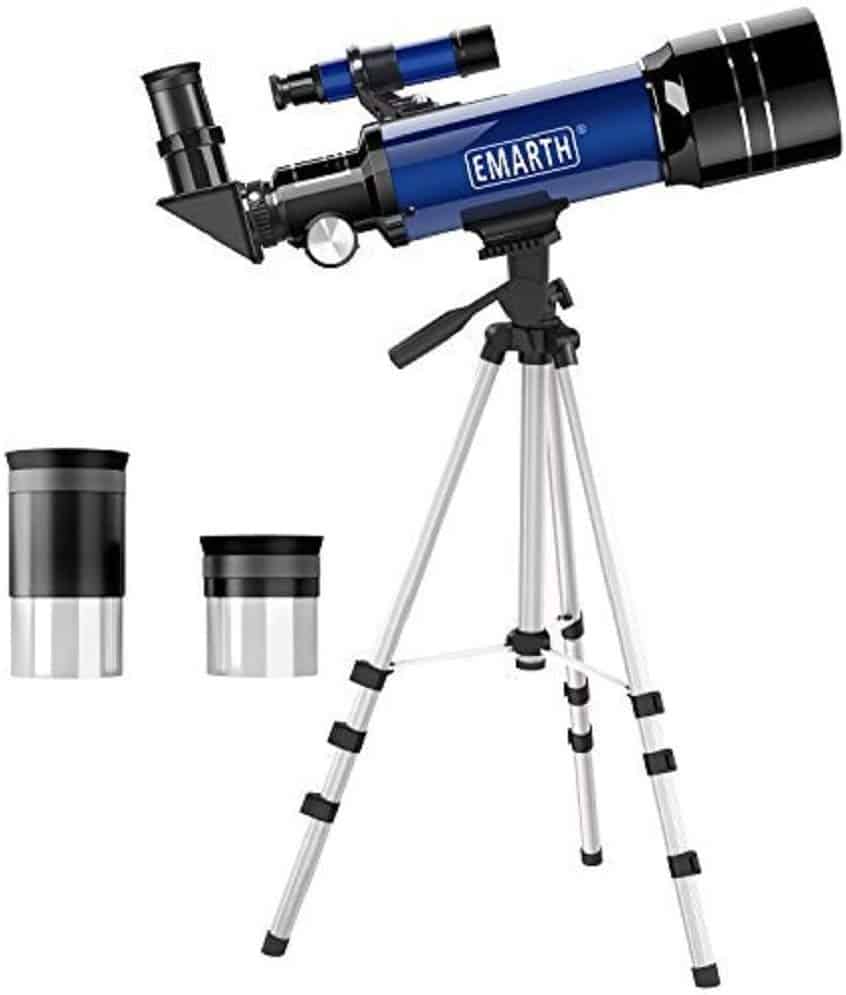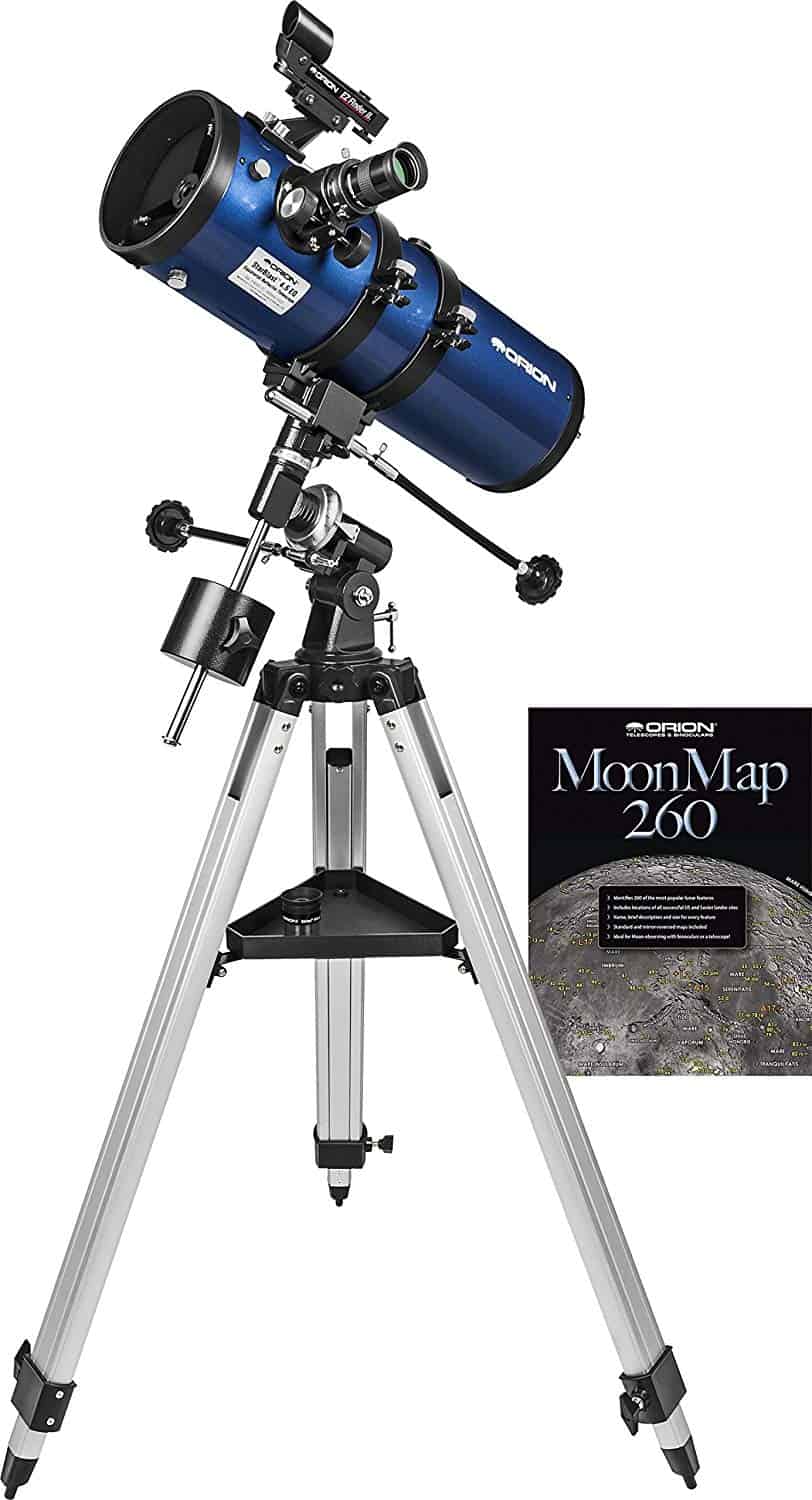There is something mystical about telescopes. With telescopes, supernovas and stars become something you can almost touch. From the safety of your backyard, you can explore faraway galaxies and mysteries of the universe.
When it comes to kids, they are awed and mystified by the power of a simple telescope. Instead of reading about things in textbooks, they can see them right before their eyes, which piques their interest and curiosity!
If you want to nurture or develop your kid’s interest in astronomy and space, getting them a telescope would be a nice start. With their feet right on the ground, they can travel through the universe with the help of a telescope!
Now comes the million-dollar question: Which are the best telescopes for kids? There are many products out there in the market and it gets tough to choose the perfect one. But you don’t have to worry, because we have got you covered there.
When you go out in the market to search for the best telescope for kids, you will see that there are tons of them available, it gets a bit overwhelming. To help you with that, we have reviewed the best telescopes for kids. You will save a lot of time, energy, effort, and money by choosing one of those given below!
Here, we have all the data you need to buy a telescope for your kid. When you are finished reading, you will find yourself less befuddled by the different features telescopes offer. You will be ready to figure out which highlights are critical for you. We will guarantee that you will be confident as you finally buy a telescope for your kid, and will be content!
Let’s take a look at what is the best out there!
Our Overall #1 Rated Pick
The first product on our list is the Celestron Portable Refractor Telescope. This telescope comes with two eyepieces, 10 mm and 20 mm. The purpose of including a low power eyepiece and a high power eyepiece is to give you variation as per your needs and the circumstances you are in.
If there is no electricity in the area where you are, then the low power eyepiece would work. If that’s not the case, then you can use the high power one.
The 10 Best Telescopes Comparison Chart
Image | Product Name | Ranking | Price |
|---|---|---|---|
1 4.20 | |||
2 4.00 | |||
3 4.00 | |||
4 4.50 | |||
5 4.40 | |||
6 4.30 | |||
7 4.00 | |||
8 4.20 | |||
9 4.20 | |||
10 4.20 |
The 10 Best Telescopes For Kids
Let’s take a look at the reviews of the top 10 best telescopes for kids present on the market.
The first product on our list is the Celestron Portable Refractor Telescope. This telescope comes with two eyepieces, 10 mm and 20 mm. The purpose of including a low power eyepiece and a high power eyepiece is to give you variation as per your needs and the circumstances you are in.
If there is no electricity in the area where you are, then the low power eyepiece would work. If that’s not the case, then you can use the high power one.
You also get a 45 degree diagonal as well as a finderscope. You can place the diagonal between the eyepiece and the telescope to get a better viewing angle. The finderscope easily fits on the top of the telescope and helps you locate objects quickly. Since this a beginner level telescope and is perfect for use by kids, comfortable and more natural viewing is made possible in this.
The tripod that comes with this telescope has an adjustable length of 22-25 inches. The tripod pan handle gives you the ability to move the telescope both horizontally and vertically. It is effortless to assemble this telescope as well. A backpack comes with this telescope, adding to its portability. The Starry Night astronomy software is also available with this telescope. This makes the viewing experience even more hands-on for your kids.
Features and Specs
PROS
CONS
With amazing features, at an affordable cost, Orion GoScope is a good beginner telescope to get your kid started in astronomy.
Orion GoScope is a portable telescope that you can pack at any time and take anywhere to get the best stargazing experience. You can use this telescope in the daytime or at night and get amazing results in both cases.
The Orion GoScope has a 70 mm objective lens, which gives you high-quality images of distant targets. You can easily set up this telescope in minutes, something that your kid will find helpful.
It has a finderscope which helps you view far-away objects. There are two eyepieces, one is 10 mm, and the other is a 25 mm eyepiece. Moreover, the Moon Map 260 that comes along with this telescope makes it easier for your kids to learn cool facts about the moon. The tripod has an adjustable height of 17.75” to 43.5”.
It weighs around 3.5 lbs., which makes it lightweight and portable. The specially designed backpack that comes along with the telescope makes it easier for you to pack the telescope and carry it around.
Features and Specs
PROS
CONS
Oumoda Telescope has a sleek and elegant design and looks like a high-tech telescope. However, don’t get worried about the high-tech appearance as it is very easy to use and the controls are pretty simple. It is a durable telescope and if it gets banged around on a trip by your kid, it will survive the wear and tear.
The telescope is easy to assemble. It has a 50 mm aperture along with a focal length of 360 mm. You can switch the eyepieces and use the telescope both for stargazing and earth-viewing. The magnification of the telescope can be adjusted to help you get better views.
If you are trying to get your kid to view a far-away planet on a cloudy night, this telescope will do its job perfectly. Even though it doesn’t have a bright color and doesn’t have any cool stickers attached, the Oumoda Telescope is a telescope that your kids would grow to love over time!
Features and Specs
PROS
CONS
Opening this telescope by SOLOMARK would be like unwrapping a Christmas present for your kids. The telescope comes with various accessories such as sunshade, backpack, tripod, a Barlow Lens, a smartphone adapter, etc.
Your kid, in various projects, can use these accessories. If they want to stargaze, they can make use of the two eyepieces of varying magnifications. If they are out on a safari and want to look at the animals more closely, the Barlow lens will help them see the zebra stripes.
If they want to take pictures of what they see, they can hook up the phone to the smartphone mount and have fun. With this telescope, the sky is the limit!
Even though there are a lot of accessories, there is no need for you to be intimidated. The telescope can be grabbed right out of the box, all ready to use. The rest of the things are optional. If you are looking for a telescope that is versatile yet is simple, then give SOLOMARK telescope for kids a look.
Features and Specs
PROS
CONS
The Black twinstar is a great product for kids as well as adults who are looking for a good-quality beginner telescope. It is easy to use and is pretty straightforward to assemble.
With the help of this refractor telescope, you can get amazing views of the moon, and the Orion Nebula can see the rings of Saturn and a lot more of the amazing celestial objects.
The customized backpack which comes along with this telescope makes it easy for you carry the telescope and its accessories around. The 80 mm fully coated chromatic objective lens of this telescope helps you get crystal clear views.
A step-by-step assembly guide is available with this telescope along with the instructions manual, which makes it very easy for your kid to work with the Black TwinStar. It is not only a celestial telescope but is a terrestrial telescope as well.
In the kids' bundle, you will get a Space Activity book, 12 Glow-in-the-dark stickers, and a Lunar card.
Features and Specs
PROS
CONS
The Celestron AstroMaster is a feature-packed telescope. The red dot StarPointer helps you in locating objects in the sky. The knob for turning the telescope is marked with notches so that you can easily track the movement. However, the fact that it has various features doesn’t prohibit kids or amateurs from using it.
This telescope comes with the Starry Night astronomy software, which helps in getting your child to learn more about what they see in the sky.
The two eyepieces, 20 mm and 20 mm, provide you with 6high quality images. You can adjust the tripod at various angles to follow stars or find other celestial objects. The smartphone mount can be used by your child to take pictures of the objects they are looking at.
All in all, the Celestron AstroMaster is a great telescope for use by kids. It has user-friendly features and has plenty of accessories as well. Your kids will learn a lot while using this telescope. Not only learn, but they will also have plenty of fun as well!
Features and Specs
PROS
CONS
With a 102 mm aperture, the Infinity Telescope is perfect for zooming in on distant objects. Whether your kid wants to see Saturn’s rings or the eggs inside a bird’s nest, this telescope will not fail to deliver. This telescope offers three magnifications; low, medium, and high. With the help of the included Barlow lens, the magnification of the eyepieces can be doubled.
Another good thing about the telescope is the Altazimuth mount. The mount is adjustable and has panhandle controls. With the slow-motion tracking, you will not miss one moment of a lunar eclipse!
With the help of the red dot viewfinder, you can easily point the scope at various objects. The accessory tray which comes with the telescope keeps the accessories safe and handy while you are observing the sky. With the help of the instructional DVD and the Astronomical software, your child’s learning process will never stop.
Features and Specs
PROS
CONS
MaxUSee is a refractor telescope with variable magnification. It is a celestial as well as a terrestrial telescope. With a 70 mm aperture, you get clear and bright views. The finder scope helps you to find objects without any difficulty.
The Barlow lens helps you increase the magnification. It has 4 eyepieces, each of varying magnification. The telescope is pretty easy to setup. The phone adapter which comes with the telescope helps you to capture anything that you see. The durable construction ensures that you can use the telescope for a long while.
This is a telescope that both kids and adults would equally enjoy. It is a lightweight telescope, which makes it pretty portable. For astronomy beginners and kids, this telescope works wonders.
Features and Specs
PROS
CONS
Emarth is a nice refractor telescope with an aperture of 70 mm. It weighs less than 3 pounds, which makes it incredibly portable. Your kid can easily carry the telescope around in a backpack on camping trips. This telescope has a small 40 cm tripod stand made of aluminum. There are two eyepieces and a finder scope.
Moreover, the kids will find the included Moon map to be very informative. A little assembly is required, but it is easy enough to be set up by kids. The finderscope helps you in focusing on the telescope and finding distant objects fairly easily.
The erect image diagonal, which comes with the Emarth, keeps the images upright. This telescope is perfect for terrestrial viewing as well as celestial viewing. With the 24-months warranty, you can rest assured that you are getting a quality product.
Features and Specs
PROS
CONS
The last telescope for kids on our list is the Orion StarBlast. It has a tripod whose height can be adjusted. It comes with controls for things such as positioning, tracking, aligning the lens with the stars. The clarity of this telescope is what makes it stand out from the rest of the telescopes in the market.
With a 450 mm focal length, and two eyepieces of magnification 18x and 45x each, you can view everything there is to see in the sky.
With the help of the Equatorial mount, then telescope remains stable and vibration-free. It comes with a Moon Map, which your kids will find quite fascinating. This telescope is a bit heavy and large. This means that your kids will not be able to carry it around and will require adult-help to set it up.
Features and Specs
PROS
CONS
Buying Guide
Before buying the best telescopes for kids, there are a few things you need to look out for. To make your buying process simpler, we have put together this compact yet comprehensive buying guide.
Let’s take a look at it.
Types of Telescope
Telescopes are of different types. Let’s take a brief look at them so that you would understand what you are getting into.
1. Refractor Telescopes
These are the most commonly found telescopes. Simply put, it’s a long tube attached with a lens. This telescope can magnify objects both on the ground and in the sky. This would work both as a telescope for stargazing and birdwatching.
Pros
- Easy to use
- Affordable
- Versatile
Cons
- Not very powerful for distant objects
2. Reflector Telescopes
Instead of a mirror, the reflector telescopes make use of a mirror. They provide better quality and clarity. As compared to refractors, you can see distant space objects better with Reflector telescopes. However, they can’t be used to magnify objects on the ground. They can’t be used for earth viewing.
Pros
- High-quality image
- Better clarity
- Works great for distant space objects-
Cons
- Not meant for earth viewing
3. Compound Telescopes
Compound telescopes offer you the best of both Reflector and refractor telescopes. You can use them to see far off things in the sky as well as see things right here on the earth. They provide you with clear, sharp images because of the combination of mirrors and lenses used in them. However, they are pretty expensive and meant for professional use; thus, they are not quite suitable for kids of a young age.
Pros
- High-quality image
- Versatile
- Multi-purpose use
Cons
- Expensive
- Meant for professional use
Parts of Telescope
If you are going to buy a telescope, you need to know a little about its parts so that you would know how to differentiate between a good telescope and a bad telescope. Let’s begin
1. Optical Tube
The most obvious and biggest part of the telescope is the optical tube. If you are using a refractor, the optical tube will have a lens at the end. In the case of a reflector, it will come with a mirror. Both the lens and mirror will be present if the telescope is a compound.
2. Tripod
With the help of a tripod, your telescope stays still, and you can easily observe the mystical universe. You should get an adjustable tripod for your kid so that the height can be adjusted as your kid grows.
The material from which a tripod is also built matters. The weight of the telescope is directly proportional to the tripod it is going to stand on. This plays an important role in determining the portability and mobility of the telescope.
3. Eyepiece
This is the part of the telescope which is used for actual viewing. The eyepieces are of different magnifications. This means that you can change your eyepiece to get better results. Most telescopes come with multiple eyepieces, each with different magnifying power.
4. Lens
The lenses and mirrors used in the telescope differ according to their magnification. Be very careful when choosing the lens/mirror since it controls the quality of the telescope. The aperture of the lens tells you whether the quality of the lens is high or not.
5. Finderscope
Finderscope is basically a mini-telescope which is attached to the bigger on. This is an assisting tool, which will help your kid in lining up the angles accurately.
Features of a Telescope
There are various features and functionalities of a telescope, and if we keep talking about them, we will be here all day. The three main things you need to know about a telescope are:
- Aperture
- Focal length
- Magnifying Power
1. Aperture
Aperture is the size of the mirror or lens of the telescope. The bigger the aperture is, the more the light that enters your telescope. This means you will be able to see objects more clearly.
2. Focal Length
The length between the focal point of the optical tube and the mirror or lens of the telescope is the focal length. The bigger the focal length of a telescope is, the bigger will be the objects you see in the eyepiece.
3. Magnification
Magnifying power is a comparison between the focal length of the telescope and the focal length of the eyepiece. The magnification is usually measured in units such as 10x, 20x, etc. The greater the magnification, the better the telescope is. Objects actually have a limit to which they can be magnified. If you find a telescope with 400x magnification, don’t buy the telescope as it is probably unrealistic.
Things to consider before buying the Best Telescopes for Kids
Reason for buying
Before buying a telescope, you need to know for what purpose you are making the purchase. The qualities and services offered by the telescope will depend directly on your needs and requirements. Since you are going to buy the telescope for your kid, you don’t need a professional telescope. You only require one that will fulfill the needs of your kid.
Accessories
Since you are buying a telescope for your kid, you are not going to need a lot of accessories. So, don’t waste your money on buying a telescope that comes with a lot of additional things. Just choose a simple, basic yet powerful telescope to give your kid the start they need.
Two or three eyepieces would be sufficient for your kid. Eyepieces that have low magnification are sufficient to view nebulae and other celestial objects. Medium to high magnification is required to view the planets and moon in detail.
Barlow Lens
A Barlow lens can be attached to the telescope. If you attach a Barlow lens before inserting the eyepiece, the magnification of the eyepiece will be doubled, even tripled.
Color Filter Kit
If you attach filters to the eyepiece, you can allow/block various wavelengths of light. The filter will change how your kid will see the same object. Different filter enhances different features on the same object. A simple 3 color filter set is perfect for exploring our solar system. Your kid will definitely love to play around with the filter.
Star Maps
Children love learning new things. Star maps are pretty inexpensive and are a great resource of knowledge. They will help in getting your child to learn about stars and constellations in no time. Some telescopes come with star maps with them. A few have special astronomy software which your child will definitely appreciate.
Basic Maintenance Kit
Kids need to learn how to take care of their things from a young age. This builds the quality of responsibility in them. In order to keep the telescope clean, you should get them a basic maintenance kit. Microfibre cloths that don’t scratch the telescope, cotton buds for the cleaning of eyepieces, etc. are the things that you should give your children to keep their telescope clean with.
However, you need to ensure that for cleaning tonics have chemicals in them, so it’s better to keep them away from your children.
Warranty
When it comes to any device with mechanical parts, you need to look out for a warranty. Normally, telescopes have one year warranty. Don’t hesitate to call the manufacturer and get some help if you face any issues with your product.
Price Range
Whenever you buy a product, you should look for one that should give you the best performance for the money it costs. Take a look at the price of the telescope before buying it. Higher price tags don’t necessarily mean great features. Try to get a balance between your budget & the features offered. Even if you spend a little more money on the product, ensuring that it is durable, it will be worth it in the long run.
FAQs
Can adults use telescopes for kids?
Yes, telescopes for kids can be used by adults. They are fully-functioning telescopes. They are just designed to be convenient and comfortable for kids. However, the image quality of the telescope will not be as good as that meat for professional use.
Can you take pictures with a Telescope?
If you attach a camera with the eyepiece, you can take a picture of anything that is getting reflected on the eyepiece.
How important is a tripod?
Tripods are pretty important as they reduce the vibrations passing through the telescope. In order to keep the telescope steady, a tripod is a solid choice.
What is the difference between Terrestrial and Celestial telescope?
Terrestrial telescopes are meant to be used for viewing objects on earth, such as seafaring and birdwatching. Celestial telescopes are telescopes that are used to view distant objects in the sky.
Why should I get a kid’s telescope instead of a normal telescope?
There are various benefits of getting a kids telescope over a normal telescope. For starters, the telescopes meant for kids don’t have very technical controls. They have large buttons and small tripods, which make them easy to use. They are much more convenient than telescopes meant for use by adults. Moreover, they come with stickers, moon maps, activity books, and star charts.
Final Words
With this, we conclude our review of the best telescopes for kids. It can a pretty daunting task to buy a telescope when you don’t know which one is the best one from thousands of products available in the market. Our in-depth reviews will help you choose a telescope that functions the best for your kid.
To buy the best telescope, you need to keep the things mentioned above in mind while looking for a telescope, and you'll find your ideal product. We have made your research work a bit easier by listing down the best products.
All the 10 best telescopes for kids in this list are known for their excellent results, and regardless of which one you choose for your kid, you will not be disappointed.
Here’s to a great stargazing experience for your kid!

